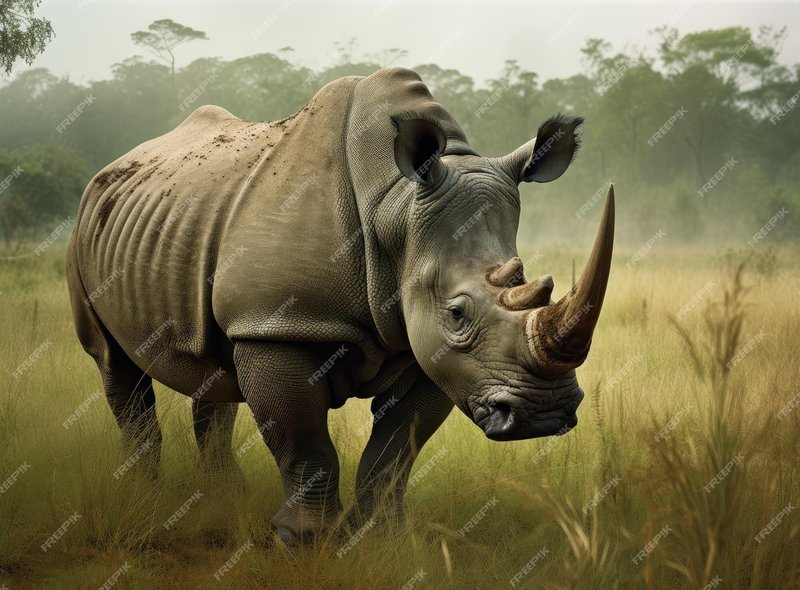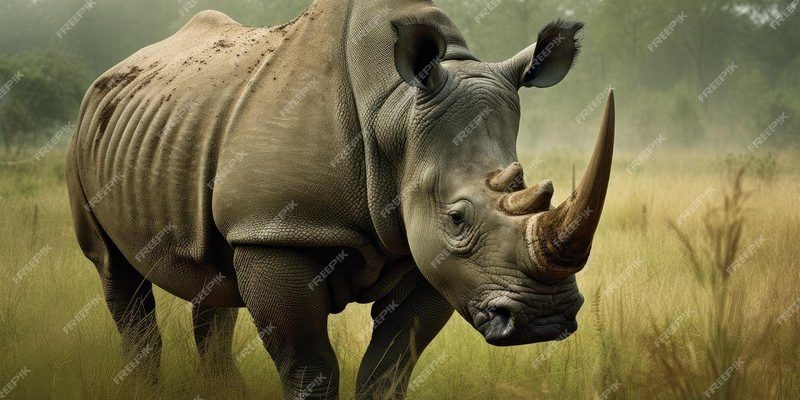
So, how did these incredible animals come to be? In this article, we’ll journey through the evolutionary timeline of the white rhinoceros, exploring their ancient ancestors and the environmental shifts that shaped them into the creatures we recognize today. Along the way, I’ll sprinkle in some fascinating facts and insights about their behavior and current conservation challenges.
The Ancient Ancestors of Rhinos
The story of the white rhinoceros begins millions of years ago with their ancient ancestors. These ancestors weren’t quite like the rhinos we know today; they were part of a larger family called the *Perissodactyla*, which also includes horses and tapirs. Around 50 million years ago, these early hoofed mammals roamed a lush, forested world. They were smaller and had different diets, which suggests they adapted to a variety of environments.
One of the fascinating ancestors is the *Hyracotherium*, which lived during the Eocene epoch. Just picture a small, dog-sized creature that grazed on soft leaves and fruit. Over time, these animals evolved, with some branching off into distinct lines that eventually led to the modern rhinos. Each step in this long journey highlights the gradual changes that occurred as these animals adapted to their environment, developing traits such as larger bodies and thicker skin to withstand changing climates and predators.
The Divergence of Species
As millions of years passed, different rhino species began to emerge. The landscape of Africa changed dramatically—think volcanic eruptions, climate shifts, and the expansion of grasslands replaced forests. This shift pushed rhinos to adapt in different ways. The white rhinoceros, *Ceratotherium simum*, diverged from its relatives around 2 million years ago.
The white rhinoceros has two subspecies: the southern white rhinoceros and the critically endangered northern white rhinoceros. The southern variety, which is most common today, once roamed a much larger area. However, due to habitat loss and poaching, its numbers dwindled until conservation efforts helped bring them back from the brink. Imagine a near-miraculous rescue—thanks to dedicated caretakers and breeding programs, these majestic creatures are slowly reclaiming their place in the wild.
Physical Characteristics and Adaptations
You might be wondering what makes the white rhinoceros so unique compared to other rhino species. Well, first off, they’re not actually white! The name comes from a mistranslation of the Dutch word “wijde,” which means “wide”—referring to their broad mouths suited for grazing. This mouth shape is perfectly adapted to munching on grasses, their primary food source.
In terms of size, the southern white rhinoceros is one of the largest land mammals, weighing between 3,000 to 5,000 pounds and standing about 4 to 6 feet tall. Their thick skin, which can be up to 2 inches thick, protects them from thorns and insect bites. Think of it as nature’s own armor, allowing them to thrive in their tough environment.
Behavior and Social Structure
Social behavior is another intriguing aspect of the white rhinoceros. Unlike many other species, they tend to be more social and can often be seen in groups. These groups, called crashes, are typically made up of females and their young, while males tend to be more solitary. Imagine a tight-knit family gathering in the wild, where mothers watch over their calves, teaching them important survival skills.
Communication among white rhinos is also fascinating. They use various sounds, like snorts and growls, to express different emotions and alert others to potential danger. This social structure and communication style are essential for their survival, showcasing how even the largest creatures rely on each other in the wild.
The Threats Facing White Rhinos
Unfortunately, the evolutionary journey of the white rhinoceros is marked by significant threats. Poaching and habitat loss are the two main challenges they face today. Poaching primarily targets rhinos for their horns, which are falsely believed to have medicinal properties. This illicit trade has led to staggering declines in rhino populations, especially the northern white rhinoceros, which is now down to just two known individuals.
Additionally, as human populations expand, white rhinos lose their natural habitat to agriculture and development. This not only limits their grazing land but also brings them into closer contact with humans, leading to more conflict. Protecting these magnificent creatures means addressing these threats head-on, emphasizing conservation efforts and the importance of sustainable land management.
Conservation Efforts and Future Prospects
The future of the white rhinoceros isn’t entirely bleak, thanks to dedicated organizations and conservationists working tirelessly to protect them. Innovative strategies, such as anti-poaching patrols and habitat restoration projects, are crucial. For example, some reserves use drones to monitor rhino movements and ensure their safety in vast areas.
Breeding programs are also making a difference, especially for the northern white rhinoceros. Scientists are exploring advanced reproductive technologies, like in vitro fertilization, to increase their numbers. It’s a race against time, but there’s a glimmer of hope that these efforts could help revive this critically endangered subspecies.
Connecting History to the Present
The evolutionary history of the white rhinoceros is a poignant reminder of nature’s resilience and the responsibility we have to protect these living relics. Each rhino carries with it a story of survival—of thriving in a world that constantly changes. Understanding their past helps us grasp the urgency of protecting their future.
As we navigate conservation efforts, it’s essential to remember that every individual white rhino counts. By supporting wildlife conservation initiatives, spreading awareness, and promoting eco-friendly practices, we all play a role in ensuring these remarkable creatures continue to roam our planet.
The journey of the white rhinoceros from ancient ancestors to the present day is a remarkable tale of resilience. While they face profound challenges, there’s still hope for their future through collective efforts and innovations in conservation. So, next time you encounter a story about rhinos or see one in the wild, remember it’s not just an animal—it’s a symbol of our shared responsibility to protect the natural world. Let’s keep that story going, one rhino at a time.

